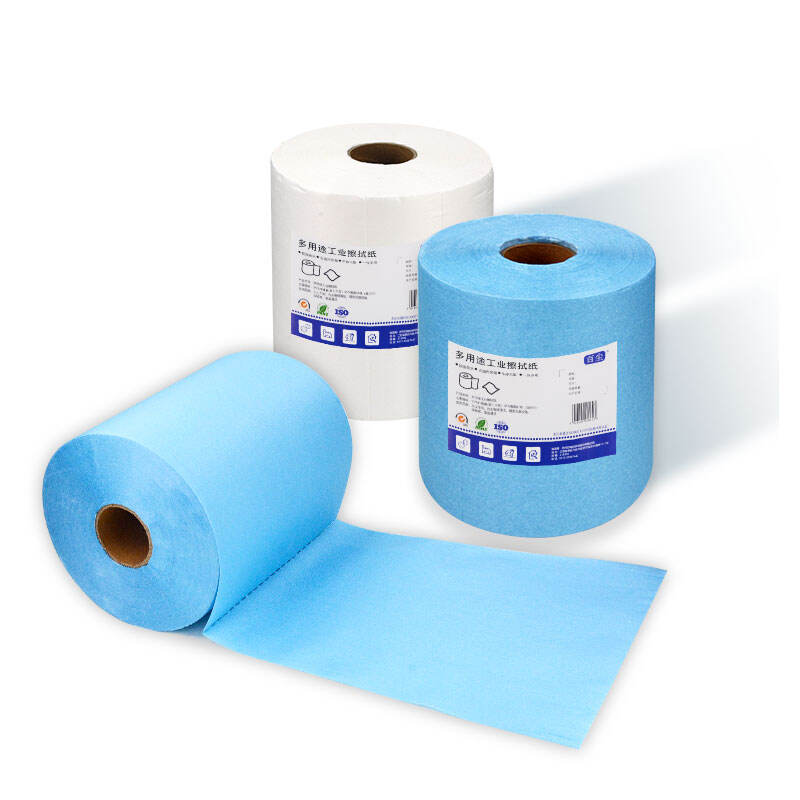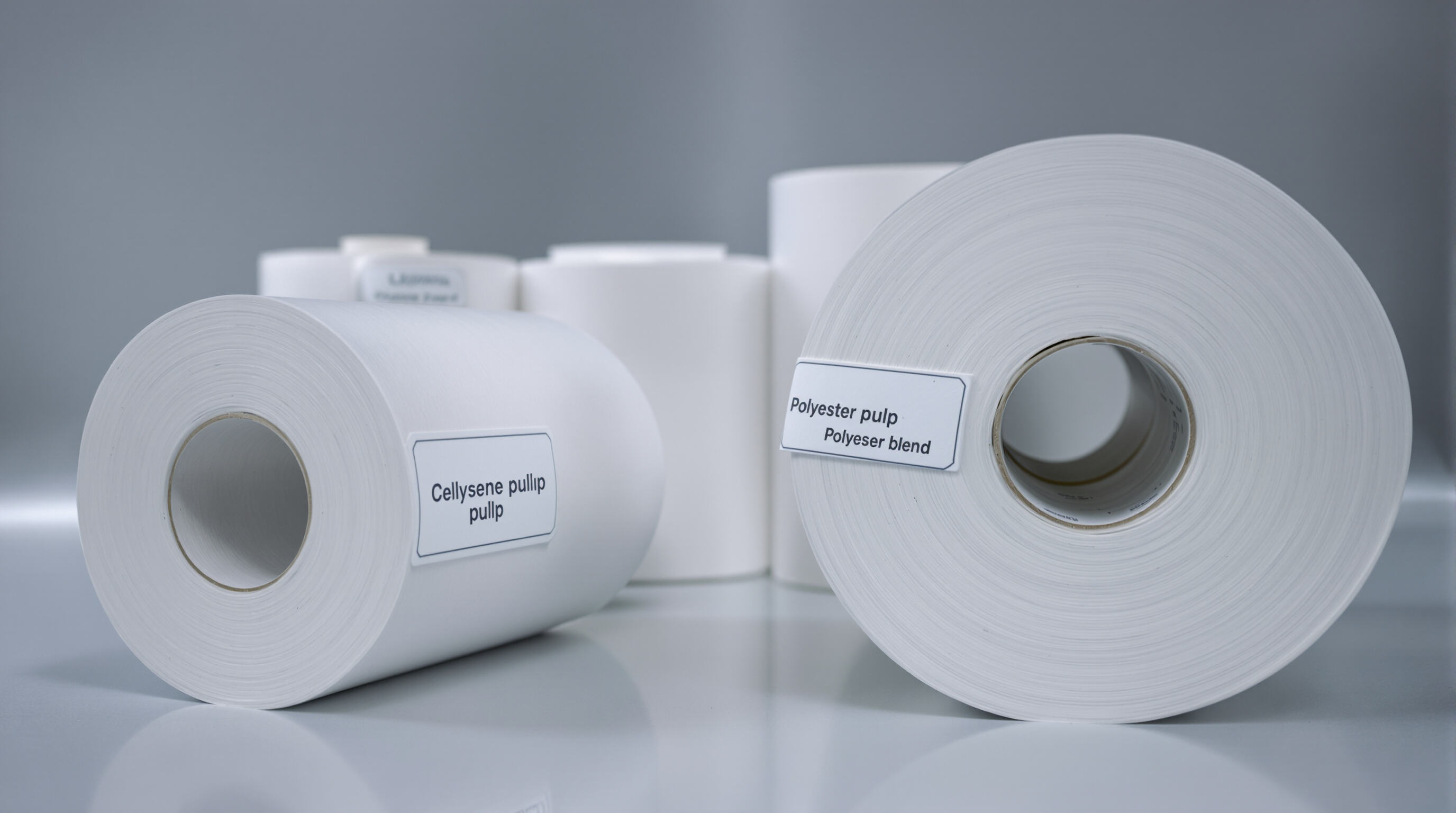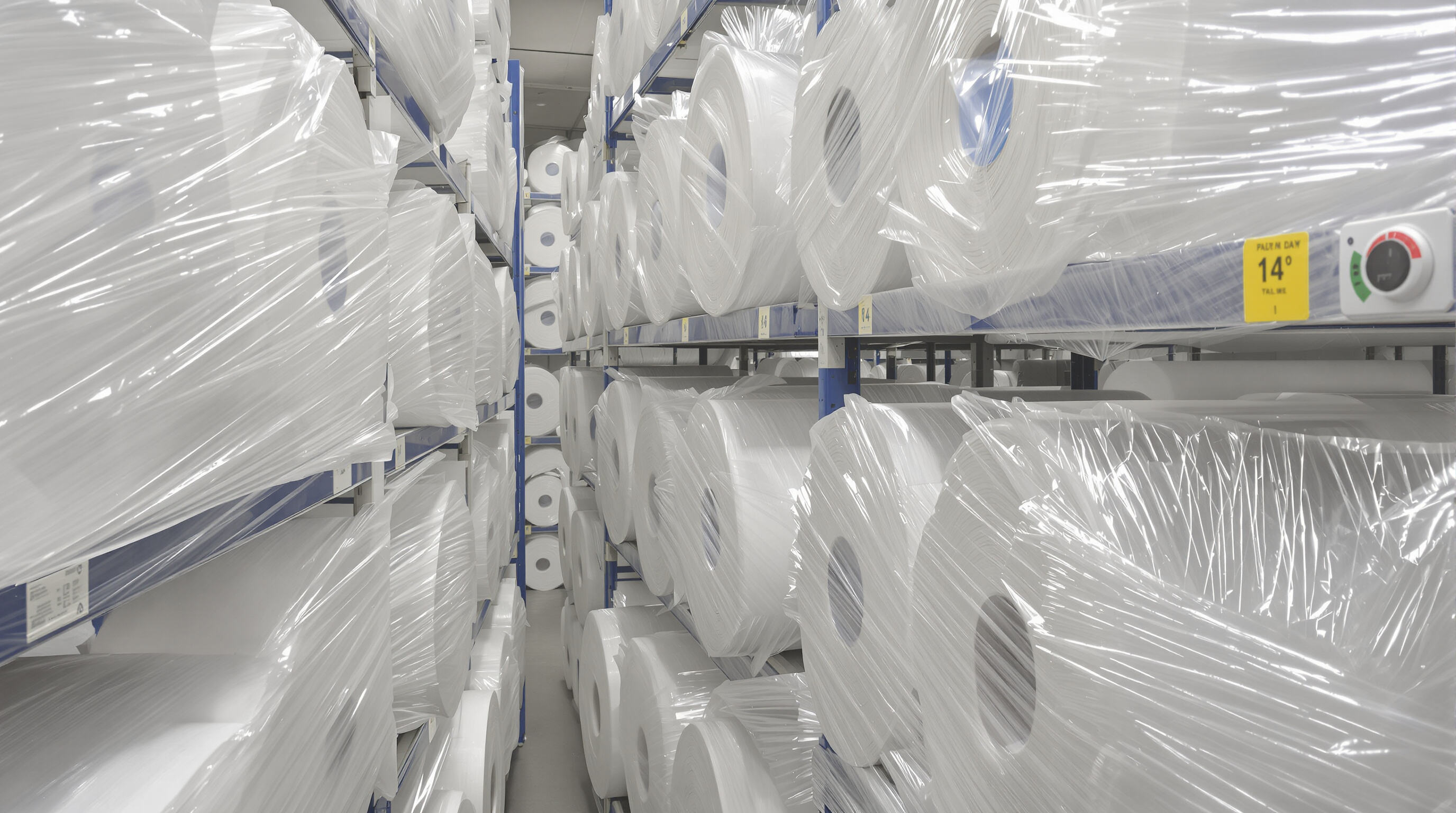Understanding Cleanroom Paper Rolls and Their Typical Lifespan
What Are Cleanroom Paper Rolls and Where Are They Used?
Cleanroom paper rolls come from a special category of materials that don't shed fibers or particles, making them essential where even tiny bits of dust can cause problems. These products find their way into labs and factories across various fields including drug manufacturing, biotech research facilities, and places that make computer chips. When scientists need to wrap delicate instruments or protect surfaces without leaving behind traces, these papers stay put without creating additional mess. Industry forecasts suggest that businesses will want around 8 to 10 percent more of these specialty papers each year going forward. Why? Because regulations keep getting stricter about what counts as acceptable levels of contamination, especially when it comes to things like heart valves or components for smartphones.

Average Shelf Life Under Recommended Storage Conditions
When stored in manufacturer-recommended conditions—typically 15–25°C (59–77°F) and 40–60% relative humidity—cleanroom paper rolls maintain functional integrity for 2–3 years. Prolonged exposure to humidity beyond 70% can reduce this lifespan by up to 40%, while temperature fluctuations above 30°C (86°F) accelerate chemical degradation in treated papers.
Key Factors That Influence Longevity of Cleanroom Paper Rolls
Three primary elements determine usability:
- Material composition: Cotton-bonded fibers with latex coatings demonstrate 50% greater particle retention than standard cellulose blends.
- Packaging integrity: Vacuum-sealed polyethylene wrapping reduces oxidation risks by 75% compared to perforated packaging.
- Handling protocols: Facilities implementing first-expired-first-out (FEFO) inventory systems report 30% less waste from premature degradation.
Environmental controls remain critical—ISO Class 5–7 cleanrooms show 65% slower paper degradation rates than less regulated environments.
How Material Composition Affects Cleanroom Paper Rolls Durability

Low-Lint Synthetic Fibers and Their Role in Extending Lifespan
Polyester has become the go-to material for high performance cleanroom paper rolls because it just doesn't shed fibers like other options do. Traditional paper made from wood pulp tends to throw off three times as much dust when rubbed against things, but polyester stays intact even after being rolled out over and over again. The way these synthetic fibers lock together cuts down on lint production by around two thirds compared to regular paper products. This matters a lot in those super clean environments rated ISO Class 3 through 5, where tiny particles at the nanoscale level can really mess up production runs and cause all sorts of problems for manufacturers.
Chemical Treatments for Enhanced Resistance to Degradation
Applying latex coatings along with antistatic agents helps materials last longer because they form protective layers against moisture and chemicals. Tests show these treatments cut down on hydrolysis problems for polyester blends by around 40%, plus they stop adhesives from reacting badly with common industrial solvents. When researchers ran those accelerated aging experiments, the treated paper samples kept about 89% of their original strength even after sitting for 18 months. That's actually pretty impressive compared to regular untreated materials which only managed to maintain roughly 57% of their initial tensile strength during similar testing periods.
Pulp vs. Polyester Blends: Comparing Base Materials for Longevity
| Characteristic | Cellulose Pulp | Polyester Blend |
|---|---|---|
| Average Lifespan | 6–12 months | 18–36 months |
| Particulate Shedding | 12,000 particles/m³ | 1,200 particles/m³ |
| Humidity Tolerance | ±60% RH | ±85% RH |
| Biodegradability | 98% in 90 days | 12% in 5 years |
Polyester’s molecular stability makes it preferable for semiconductor labs requiring decade-long material certifications, while biodegradable pulp remains cost-effective for pharmaceutical packaging with shorter lifecycle needs.
Optimal Storage Conditions to Maximize Cleanroom Paper Rolls Lifespan

Proper storage conditions directly determine how long cleanroom paper rolls maintain their contamination-control properties. Deviations from ideal environmental parameters can accelerate material degradation, compromising their low-lint performance in critical environments like semiconductor labs or pharmaceutical facilities.
Ideal Temperature and Humidity Levels for Long-Term Storage
Keeping things around 18 to 22 degrees Celsius (that's about 64 to 72 Fahrenheit) with humidity levels between 35 and 45 percent helps keep those fibers intact whether we're talking about natural or synthetic materials. Some folks who specialize in cleanrooms did a study back in 2022 and what they discovered was pretty telling. When paper rolls sit in spaces where humidity goes over 60% for three months straight, their tensile strength drops by nearly a third. And if the air gets too dry, under 30% humidity, the material becomes much more prone to cracking and breaking apart. That's why many facilities invest in climate controlled storage units equipped with sensors that track conditions in real time. These systems aren't just expensive toys though they actually work quite well for maintaining proper environmental conditions without breaking the bank too badly.
Protecting Cleanroom Paper from UV Light and Environmental Contaminants
Exposing paper rolls to ultraviolet light for around 200 hours basically breaks down the binding agents that hold them together. This kind of exposure time is roughly what happens if they sit near regular fluorescent lighting for three months straight. When tested according to ISO 14644-1 standards, papers exposed this way shed about 42% more particles than normal. Wrapping these materials in opaque polyethylene film stops nearly all UV rays from getting through while still letting air circulate properly. For storage spaces, it's important to keep away from places where solvent vapors hang around or where there's lots of alkali dust floating in the air. These substances actually react chemically with the paper coatings over time, causing damage that nobody wants.
The Importance of Packaging Integrity for Preserving Usability
Original vacuum-sealed packaging maintains sterility for 12–24 months, but once opened, rolls require resealable moisture-proof containers. A 2023 audit of medical device manufacturers revealed that facilities using zippered polypropylene bags with silica gel packs reduced premature paper replacement rates by 67% compared to those relying on basic plastic wraps.
Usage Practices That Influence the Functional Lifespan of Cleanroom Paper Rolls
Handling Frequency and Unrolling Techniques in Controlled Environments
Frequent handling increases contamination risks and accelerates material wear. Operators should use slow, deliberate unrolling motions to minimize tearing or lint generation, as abrupt pulls create microscopic fiber fractures. Proper tension control during dispensing reduces stress on the roll’s core structure, preserving its integrity for repeated use cycles.
How Glove Materials and Operator Behavior Affect Paper Wear
Studies show that latex free nitrile gloves actually create about 40 percent less surface wear compared to those rough textured PVC gloves when tested under controlled conditions. When workers press too hard on surfaces during cleaning tasks, applying anything above 5 Newtons per square centimeter of force, they end up squishing the paper's inner layers. This compression can cut down how much liquid the material absorbs by as much as 60% after repeated use. That's why many facilities now run training sessions focused on gentle handling methods. These programs have proven effective enough to stretch out the useful life of each roll by around two to three extra weeks in those sterile pharmaceutical environments where every detail matters for compliance purposes.
Single-Use vs. Extended Use: Best Practices Across Industries
| Industry | Usage Pattern | Key Rationale | Average Roll Lifespan |
|---|---|---|---|
| Pharmaceuticals | Single-use | Prevents cross-contamination | 1 shift |
| Electronics | Multi-use | Cost efficiency in ISO 5 environments | 3–5 days |
| Biotech | Conditional reuse | Material compatibility testing required | 2–4 days |
Case Study: Reducing Waste in a Semiconductor Facility Through Rotation
A Taiwan-based semiconductor plant implemented a first-expired-first-out (FEFO) rotation system for cleanroom paper rolls, cutting material waste by 32% within six months. Real-time humidity sensors in storage cabinets reduced premature degradation incidents by 41%, enabling precise tracking of each roll’s remaining functional lifespan.
Recognizing Degradation and Knowing When to Replace Cleanroom Paper Rolls
Keeping an eye on the condition of cleanroom paper rolls matters a lot when it comes to controlling contamination levels. Even with good storage practices and careful handling, these materials still break down over time because of environmental stressors and just plain old wear and tear. When paper starts showing signs like yellowing spots or frayed edges, that usually means something has gone wrong chemically. Facilities run tests for particles coming loose from the material as well, which can catch problems early before they mess up delicate manufacturing operations. Most cleanrooms follow regular inspection schedules based on ISO 14644-1 standards for counting particles in the air. This helps them manage expenses without breaking regulatory rules, especially important in places like semiconductor fabrication plants and drug manufacturing facilities where tiny bits of dirt can cause big headaches later on. There are three main ways these paper products tend to fail that facility managers need to watch out for:
FAQ Section
What factors can reduce the lifespan of cleanroom paper rolls?
The lifespan of cleanroom paper rolls can be reduced by improper environmental conditions, such as high humidity, temperature fluctuations, and exposure to UV light. Handling practices and packaging integrity also play roles in determining the longevity.
How should cleanroom paper rolls be stored?
Cleanroom paper rolls should be stored in climate-controlled environments with temperatures between 18 and 22°C (64 to 72°F) and humidity levels between 35 and 45 percent. Ensure they are protected from UV light and environmental contaminants.
What types of cleanroom paper materials offer longer durability?
Polyester blends offer longer durability compared to cellulose pulp, with increased resistance to particulate shedding and humidity tolerance.
Can cleanroom paper rolls be reused across industries?
Yes, depending on industry standards. For example, pharmaceutical industries often require single-use to prevent cross-contamination, while electronics and biotech may allow multi-use according to specific conditions and material compatibility.
Table of Contents
- Understanding Cleanroom Paper Rolls and Their Typical Lifespan
- How Material Composition Affects Cleanroom Paper Rolls Durability
- Optimal Storage Conditions to Maximize Cleanroom Paper Rolls Lifespan
- Usage Practices That Influence the Functional Lifespan of Cleanroom Paper Rolls
- Recognizing Degradation and Knowing When to Replace Cleanroom Paper Rolls
- FAQ Section




